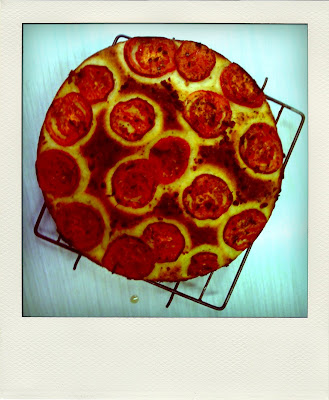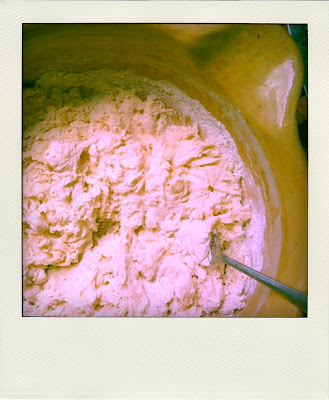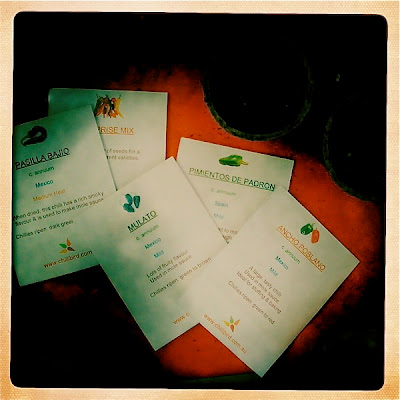
I don't know what (besides procrastination) brought me to this recipe, because until now, I've never really been a fan of focaccia. I like the idea of it, but there are just so many bad ones around that taste like they've been around for a little too long... You know what I mean, right? Like their oiliness, which should be rich and pleasant, is always just, well, oily. I'm guessing poor quality oil is the problem with many of these commercially made focaccia. And what's with taking one of these, filling it with sun-dried tomatoes, avocado and cheese (a combination that really needs to be sent back in time to 1993, FOREVER) and squashing them into oblivion with a 3 tonne sandwich press? It's never as good as you want it to be, and stuffed with 'gourmet' ingredients it always costs more than you expect. RANT. But hey guess what? Focaccia is the absolute bomb, when you make it at home with a potato.


This is Luisa from The Wednesday Chef's recipe, first published at the beginning of 2008, and the bread is so good, that I'm jealous of all those people who've been making it since then. Is has a dense, chewy crumb and is moist and so delicious that you can eat it on its own; this is the marker of a wonderful bread. The magic element here is a mashed boiled potato (really!), which you add to the regular flour, water, yeast mix, enabling you to achieve a superb texture and perfect density. The dough comes together like a dream and needs minimal kneading, so it's great for new and/or hesitant bread makers. I've followed Luisa's example and topped mine with tomato and oregano, adding a brush of garlic oil to up the ante, but olives and rosemary or sliced potatoes and parmesan - or whatever you dream up - would be great too.

One more thing: you need to use good oil here - I don't mean top shelf at Enoteca Sileno, but something with enough flavour to make the bread really shine (visually and flavour-wise). Think about the fact that the flavour of the oil really comes through here. After all, if you wouldn't dip a bit of bread into a little bowl of balsamic and Criso blended vegetable oil, you probably shouldn't put that stuff into your bread, either.
Potato Focaccia
Makes one 8-inch focaccia
Adapted only slightly from The Wednesday Chef
1 medium floury potato
2 cups bread or plain flour, plus more as needed
1/2 tsp dried yeast or 1 tsp fresh yeast
A pinch of sugar
1 1/2 teaspoons salt
2/3 cup warm water
3 tablespoons extra-virgin olive oil
2 Roma tomatoes, sliced crossways
1 to 2 teaspoons dried oregano
Coarse or flaked sea salt
1. Put the potato in a small saucepan with enough water to cover. Place over high heat, covered, and bring to a boil. Add a handful of salt. Simmer until the potato is tender when pierced with a knife, around 20 - 25 minutes. Drain and let the potato/s it cool. When cool, peel and mash finely with a fork. Set aside.
2. Pour the yeast into a large mixing bowl and add the pinch of sugar. Slowly add the warm water in a thin stream, using a fork to help dissolve the yeast entirely. Let the mixture stand for a few minutes.
3. Add the flour to the yeast water and stir with your fork to incorporate, adding the mashed potato and the salt. The dough will be thick and shaggy as in the picture above - don't worry about this! When it is looking fairly even, add 2 tablespoons of the olive oil and knead the dough by hand, pressing against the side of the bowl, for around a minute, or until it is pretty smooth. It should come together pretty quickly. Add more flour if the dough is too sticky to handle. Form the dough into a ball and let it rest, covered with a kitchen towel, in the bowl for an hour.
4. Cut a piece of baking paper to fit the bottom of an 8-inch cake tin. Gently lift the soft dough from the bowl and place it in the cake in, patting it out so that it fits snugly. Cover the top of the focaccia with the tomato slices and sprinkle the oregano and a large pinch of coarse salt over, then drizzle with the remaining tablespoon of olive oil. Let the dough rest for another hour - it should puff up again nicely.
5. Halfway though the resting time, turn the oven on to preheat at 220 degrees. When resting is complete and oven ready, bake focaccia for 40 minutes, turning the pan halfway through. Let cool on a rack for 20 minutes before removing the focaccia from the pan - otherwise it may break.





























